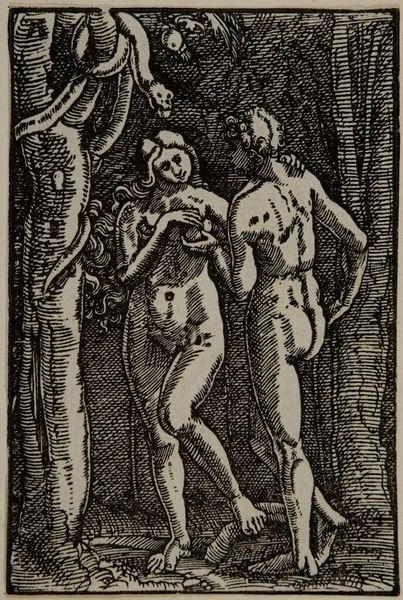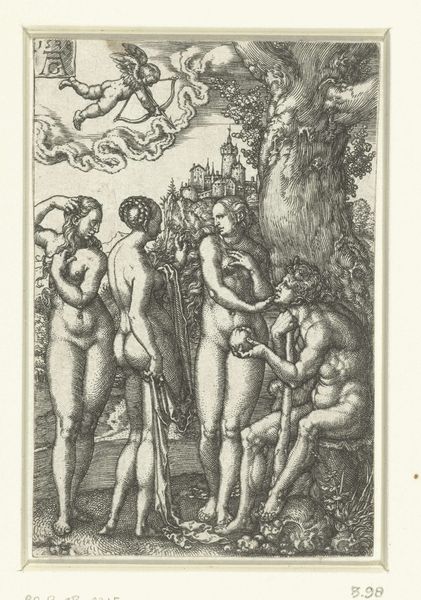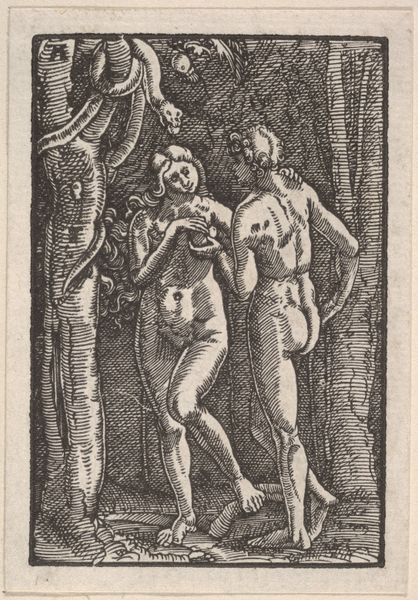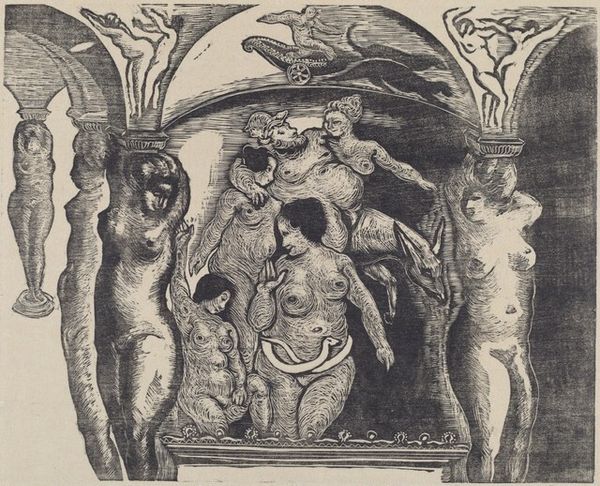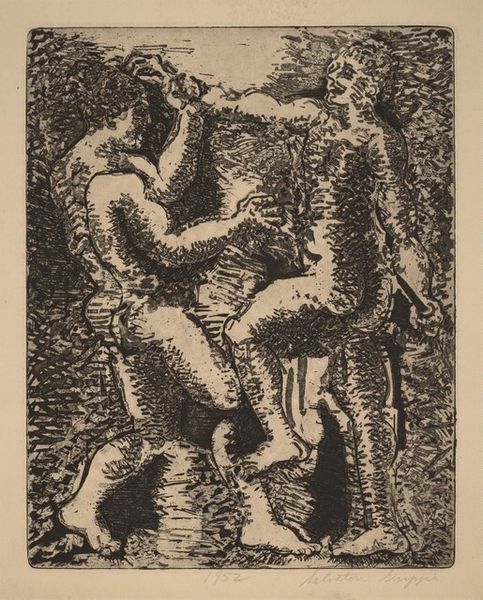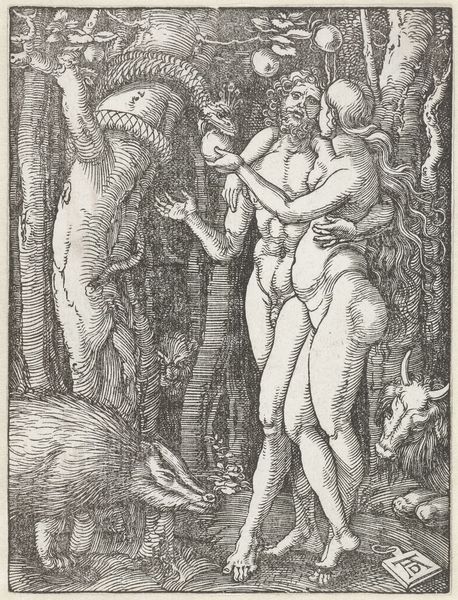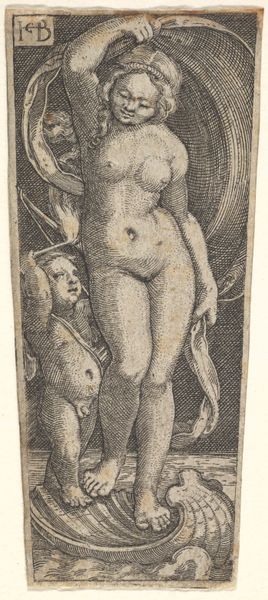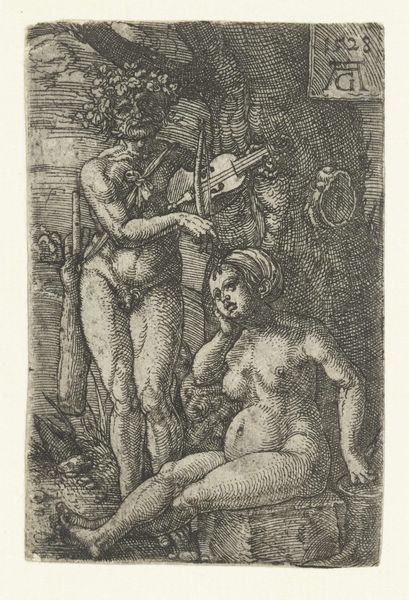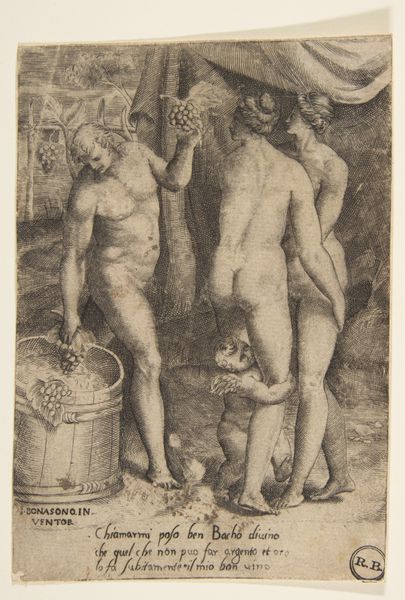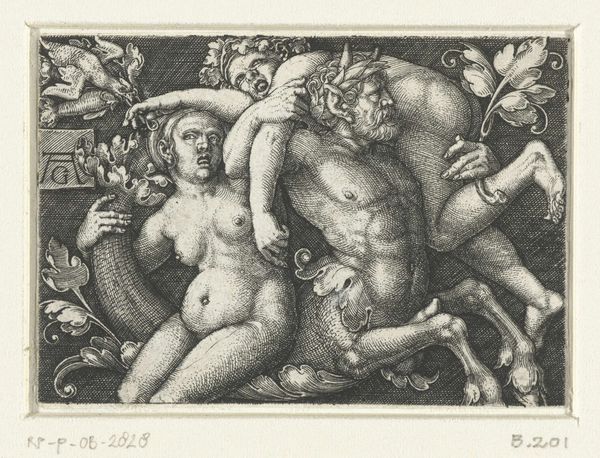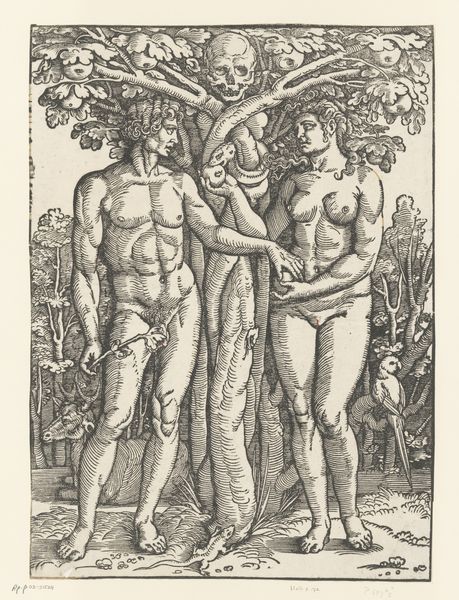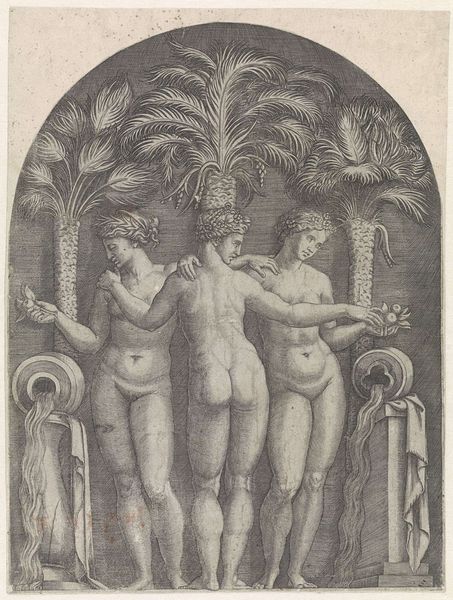
Gargantua avec les trois graces - mais a "chacune" une pomme (a la R.) c. 1942
0:00
0:00
print, woodcut
#
ink drawing
# print
#
figuration
#
woodcut
#
nude
Copyright: National Gallery of Art: CC0 1.0
Curator: This striking print by Bernard Reder is entitled "Gargantua avec les trois graces - mais a \"chacune\" une pomme (a la R.)" dating circa 1942. It's an ink drawing, translated via the woodcut medium into stark black and white. My first impression is one of visual overload! It’s incredibly dynamic. The high contrast and densely packed figures create a real sense of… compaction. Editor: The woodcut itself lends an archaic quality, connecting the work to traditions of allegorical and moralistic printmaking. Note how Reder plays with classic themes of the Renaissance—nudes, grace, the figure of a giant—and subverts it with distorted, almost grotesque figuration. Curator: Yes, I think you’re right. There's this really strong thread connecting to, say, Cranach’s nudes, but it’s run through the wringer. The distortion feels very relevant, as a modern twist on classic form. But that Gargantua figure dominating the composition immediately triggers narratives around appetite, excess, maybe even abuse of power? The title explicitly brings in the myth of the three graces, which heightens the contrast. Are these classical ideals being offered apples? Or something else? Editor: It could also be interpreted as a comment on artistic creation itself, wouldn't you agree? The giant as a demiurge-figure commanding these forms into existence. And speaking to forms—the dynamism also pulls me in as this chaotic but structured aesthetic creates depth of field while playing with flattening effects, drawing upon cubism and early-twentieth-century painting. Curator: Fascinating perspective! To consider the art making itself, where this overwhelming scene may also hint at creative fertility as its main engine... I will never look at this woodcut the same way. Thank you for offering these interpretations, allowing us to rethink inherited visual traditions in response to the realities of the contemporary artworld. Editor: It's the materiality of the woodcut itself that draws me in, I appreciate its ability to highlight aesthetic structure. The interplay between tradition and revolution continues to resonate strongly with this art.
Comments
No comments
Be the first to comment and join the conversation on the ultimate creative platform.
